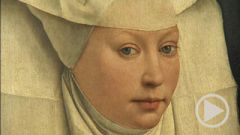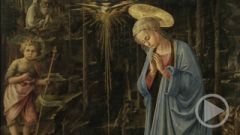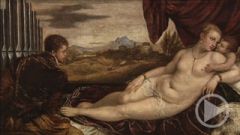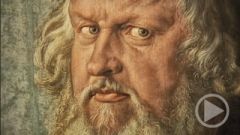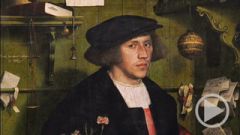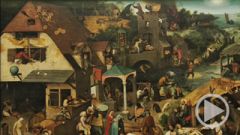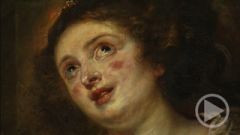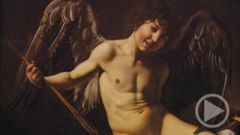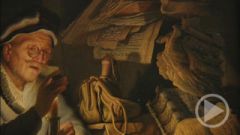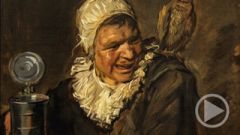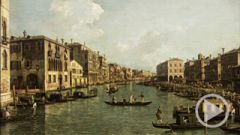- Home
- »
- Germany
- »
- Berlin
- »
- Gemaeldegalerie
- »
- The Berlin Gemaeldegallery -French Elegance in Sanssouci
French Elegance in Sanssouci
French Elegance in Sanssouci
On 1 September 1715, Louis the Fourteenth died and France sighed with relief. He had been king for seventy-two years, longer than any other European monarch. He was succeeded by his grandson, who was just five years old, so his nephew Philip Duke of Orléans was appointed regent. The period became known as La Régence. The court moved from Versailles back to Paris. Aristocrats celebrated elaborate festivities; the arts blossomed; everything became more light-hearted. People enjoyed parties and the theatre.
This was where the Rococo style emerged... and it was the world of Antoine Watteau. His paintings are graceful and often depict festivities or theatrical performances – like French or Italian comedies. Actors of commedia dell'arte gather by moonlight: Pierrot holds a torch, and Mezzetin is playing the guitar – representing the two principles of theatre: light and sound, movement and dialogue, seeing and hearing... as a delight for the senses.
"The Dance", painted around 1719, also exemplifies the grace, elegance and lightness of Watteau's world. Children are performing a bucolic piece about shepherds. The beautiful Iris looks out at us with childish innocence and a touch of flirtatiousness. Clasping her voluminous dress like a grand lady, she is ready to dance. She will soon be a woman, and will fall in love. There are many indications of her destiny: the shield is in the shape of a heart, beside it lies Cupid's arrow. Red and white roses in the basket. The dog – guardian of propriety – has fallen asleep.

The painting is rectangular, but it used to be round. One can see where parts were added. Perhaps it was changed to fit the decor of a certain room, because paintings like this were considered part of a palace's decoration. Architecture, interior design, sculptures, paintings all had to harmonise -- carefully composed to create a complete Rococo experience. Pictures were often integrated into wall panelling, as we see here in the music room at Sanssouci in Potsdam, the summer residence of Prussia's most famous king, Frederick the Great. Frederick loved all things French. As crown prince and young monarch, he collected contemporary French paintings. Fifteen Watteaus can still be seen in the royal palaces in Berlin and Potsdam, four more are in the Gemäldegalerie.
Here we see Frederick about a year before he became king. It is one of the last paintings for which he actually sat as model - later he would refuse to do so. The portrait is by Frederick's French court painter, Antoine Pesne. He had also worked for Frederick's father and grandfather.
Here, he has taken a little time out to introduce himself and his daughters. The master has a pen to hand – ready to record, say, the beauty of a flower. In the foreground, the antique roots of art: Ovid's Metamorphoses, a rich source of stories for Pesne as it had been for Rubens; and sculpture, represented by a plaster copy of the head of of the famous Apollo Belvedere. The year is 1754. Pesne is seventy-one and a successful man. His expensive clothing suggests he is the equal of any aristocrat. The dogs are fashionable status symbols. It is obvious that he enjoys considerable respect at the Prussian court.
Frederick the Second loved art, and he also used art to glorify his realm. Prussian palaces had long had galleries for works of art; but Frederick was the first to comission a special building for his collection. To demonstrate Prussia's eminence, the king now started to collect more systematically: his agents combed Europe to find prestigious works. Perseus freeing Andromeda by Rubens, for example; his St. Cecilia; or Correggio's Leda and the Swan. But Frederick's Sanssouci gallery was still part of his palace complex.

At the end of the eighteenth century, the call for a truly public museum became ever louder. And after Napoleon had transformed Europe, the ideals of the bourgeois Enlightenment also took root in Prussia. The Old Masters should be a source of "delight and edification" for all. A special commission picked out the best paintings from the royal palaces; the Giustiniani and Solly collections were purchased. Prussia's greatest architect, Karl Friedrich Schinkel, created the setting for these jewels. August the third, 1830, saw the ceremonial opening of the Royal Museum.
The world has changed much since then, in war and in peace. Berlin too has undergone transformations. Royal Museums may now be State Museums, but their purpose has remained the same.
Bernd Lindemann, director of the Gemaeldegalerie:
„One could still hang a sign in bronze above the door that reads 'To delight and to edify'. For that is the aim of the Gemäldegalerie: to allow people to enjoy pictures, and the many registers and genres of art, and also to enable them to learn something about earlier cultures, to see how different temperaments and emotions have been depicted; how fashions and the styles and idioms of artists continuously change over the course of time. Many visitors are perhaps fascinated to see how all the things with which we surround ourselves are subject to change. In exploring our gallery, perhaps we feel how even everything we consider to be contemporary is really specific to a certain time."


